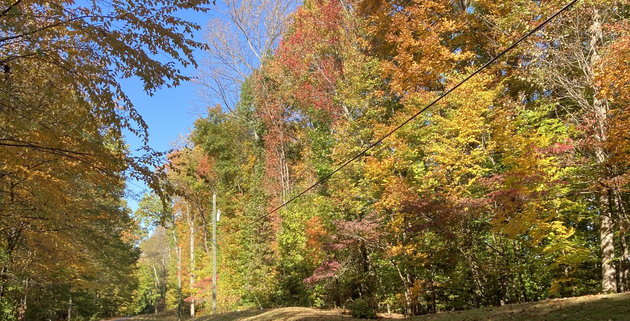Keep Our Wooded Areas Beautiful
Article and photo by Plant NOVA Natives/Plant NOVA Trees
If your community owns some wooded common land, or if you yourself own a wooded property, you may have noticed that the woods around here have been slowly changing, and not for the better. They may still look green, but the devil is in the details: much of that “green” is now made up of invasive non-native plants that damage the ecosystem and bring down the trees.
Natural wooded areas are a beautiful and invaluable resource for any landowner or community. Unlike most material assets, they appreciate over time. They capture stormwater and keep our basements from flooding. They provide soundproofing and a visual barrier between properties as well as a place for us to walk and enjoy nature. They block the wind and lower heating costs in the winter. And of course, they are the home to birds and other wondrous beings, who will need our help if their homes are not to completely disappear.
In the past, the woods managed themselves nicely. In present-day Northern Virginia, at least some care is needed to keep the woods from degrading, turning an asset into an increasingly expensive problem. It is wise to make a forest management plan that looks ahead for twenty or twenty-five years. You can do this on your own, or you can call in a consultant to help you evaluate the situation and map out solutions to any problems. Professional assistance is available, as are volunteers from various programs including Tree Stewards, Master Naturalists, and Audubon-at-Home ambassadors.
The two biggest threats to our woods are invasive non-native plants and browsing by deer. In many places, the deer have taken away everything except the mature trees and the invasive plants, not even leaving the seedlings that should be there to become the next generation of trees. Removing the invasives and protecting native plants from deer are the highest priority in most areas.
Some of our attempts to “improve” the woods may have the opposite effect. Woods do not need to be cleaned! The dead leaves and fallen trees are essential components of a healthy ecosystem. (Dumping extra leaves from your lawn damages that ecosystem, though.) Standing dead trees provide perches for birds of prey, nesting sites for songbirds, shelters for mammals, and food for thousands of species of insects. They are also becoming increasingly rare in our human-managed environment. Try to leave them standing, or if they pose a hazard, just cut off the top and leave as much as you can standing.
For information about how to manage your woods, and how to help your community develop a long-term plan, see the Plant NOVA Trees website.




